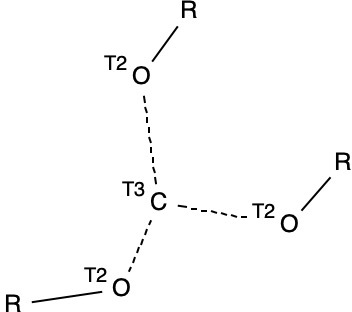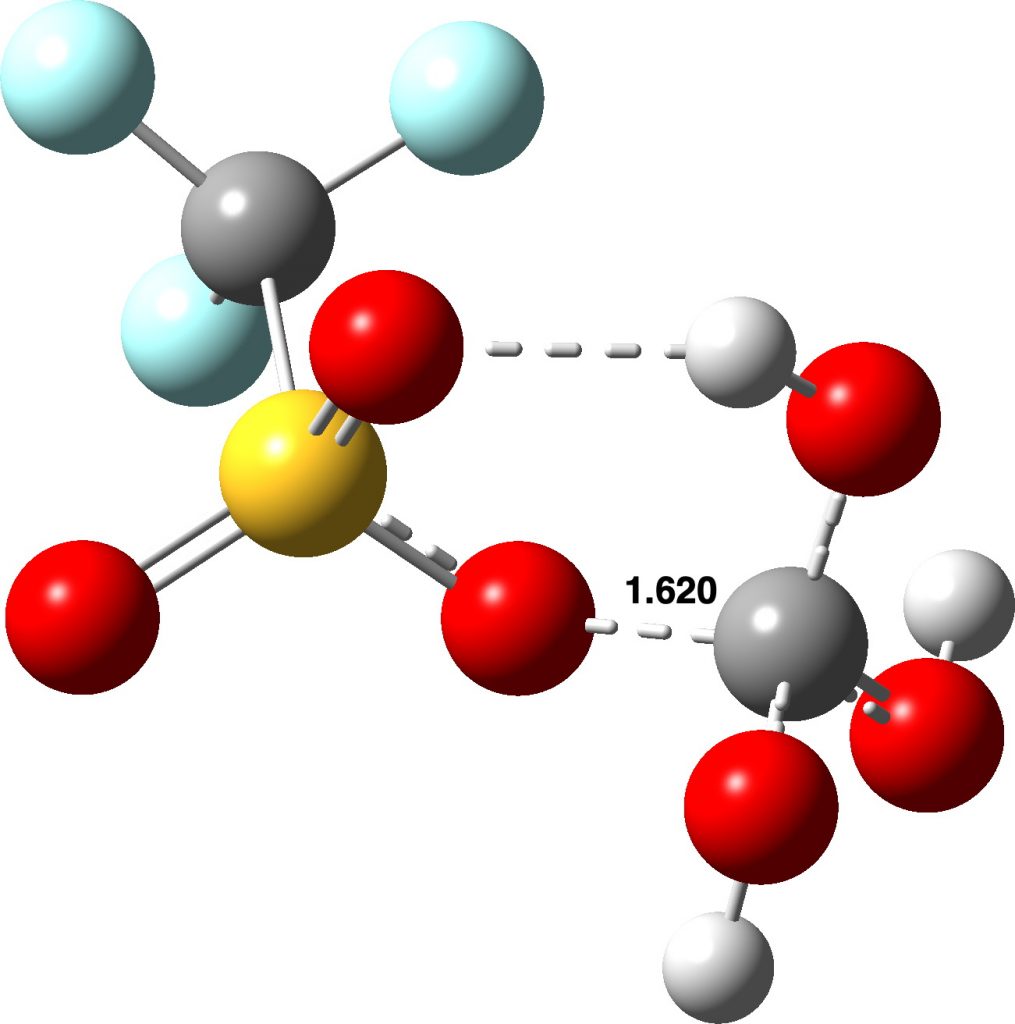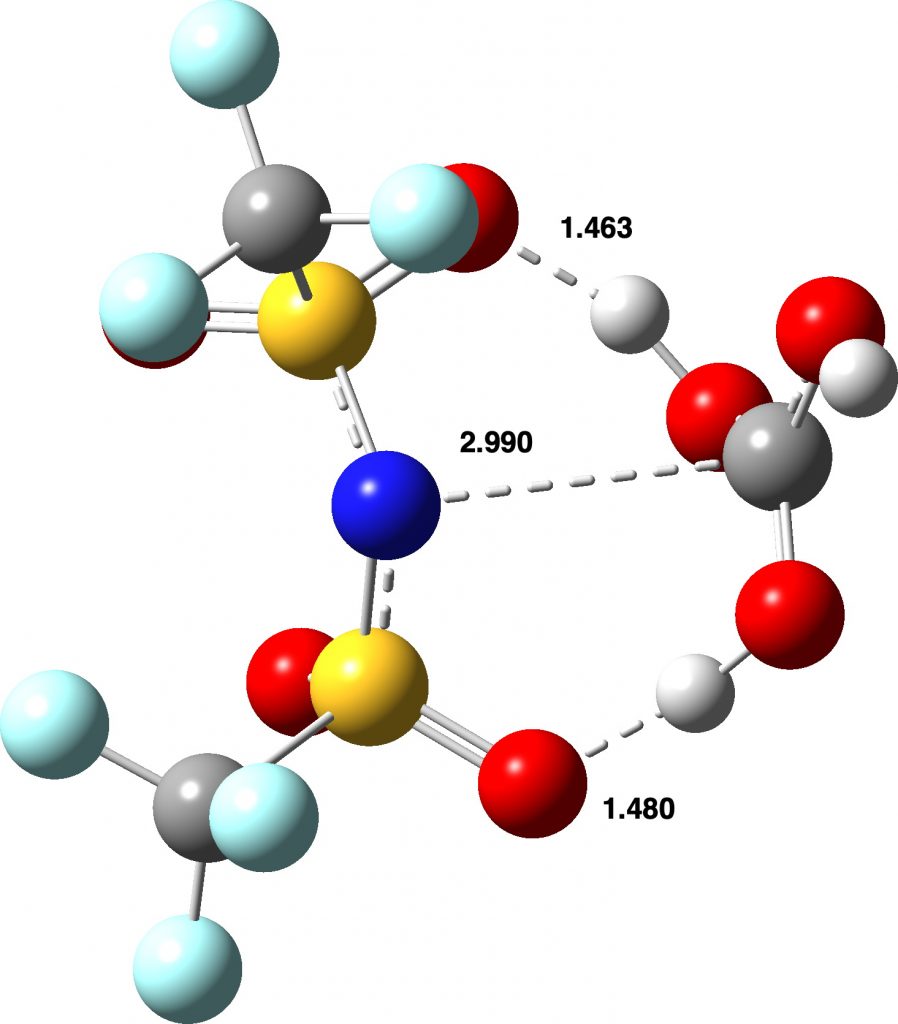In the previous post, I explored the so-called “impossible” molecule methanetriol. It is regarded as such because the equilbrium resulting in loss of water is very facile, being exoenergic by ~14 kcal/mol in free energy. Here I explore whether changing the substituent R could result in suppressing the loss of water and stabilising the triol.
I started (as I usually do) with a search for crystal structures, in this case containing the motif shown below (trisubstituted carbon, disubstituted oxygen and R = H or C and any type of connecting bond), which is the species resulting from loss of R– to form a trihydroxycarbenium cation.

This produces six hits, of which HIWQEJ[1] (DOI: 10.5517/cc3k560) and UYOYUD[2] (DOI: 10.5517/ccvrghj) are both salts of trihydroxycarbenium cation (or protonated carbonic acid) itself – the counter ion being eg AsF6 or an iron system. So R needs to be a stable anion and two obvious groups are triflate (trifluoromethylsulfonate) or bis(trifluoromethanesulfonyl)azanide.
The triflate (R=CF3SO2-O) shown below has an unusually long predicted C-O bond (1.620Å), which suggests the system is already partially ionised as shown in the top diagram. An ωB97X-D calculation [3], DOI: 10.14469/hpc/14280) reveals the species shown below is +6.6 kcal/mol higher in free energy than the one corresponding to loss of water.

Bis-triflamide (bis(trifluoromethanesulfonyl)azanide) goes further, helped no doubt by the formation of a second strong hydrogen bond between the two ions. It is now -11.8 kcal/mol lower in free energy compared to the species resulting from loss of water.

So that is my candidate for a “possible” impossible molecule. Any takers for its synthesis?
Postscript: The next higher homologue, tris(trifluoromethanesulfonyl)methanide anion + trihydroxycarbenium cation is similar to the bis-triflamide in being -12.1 kcal/mol lower than the species resulting from loss of water.
References
- R. Minkwitz, and S. Schneider, "Trihydroxycarbenium Hexafluorometalates: Salts of Protonated Carbonic Acid", Angewandte Chemie International Edition, vol. 38, pp. 714-715, 1999. https://doi.org/10.1002/(sici)1521-3773(19990301)38:5<714::aid-anie714>3.0.co;2-k
- S. Guo, J. Lin, W. Chen, X. Wei, J. Wang, and W. Dong, "CCDC 797118: Experimental Crystal Structure Determination", 2011. https://doi.org/10.5517/ccvrghj
- H. Rzepa, "Possible Formation of an Impossible Molecule?", 2024. https://doi.org/10.14469/hpc/14280
How stable are these molecules against carbon dioxide elimination (e.g. Tf₃CC(OH)₃ ↔ [H₃O][Tf₃C] + CO₂↑)? The inverse reaction seems a natural synthesis technique.